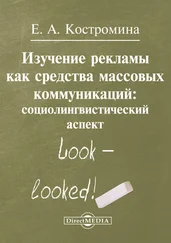Skill. T., Robinson, J., Wallace, S. (1987). Family life on prime time television: Structure, type, and frequency. Journalism Quarterly. 64(2/3), 360–367, 398.
Skill. Т ., Wallace. S. (1990). Family interactions on prime time television: A descriptive analysis of assertive power interactions. Journal of Broadcasting and Electronic Media, 344(3). 243–262.
Skill. T., Wallace, S., Cassata, M. (1990). Families on prime time television: Patterns of conflict escalation and resolution across intact, no intact, and mixed-family settings. In: J. Bryant (Ed.). Television and the American family (p. 129–163). Hillsdale, NJ: Lawrence Eribaum Associates.
Slater. D., Elliott, W. R. (1982). Television's influence on social reality. Quarterly Journal of Speech, 68, 69–79.
Slater. M. D. (1990). Processing social information in messages: Social group familiarity, fiction versus non-fiction, and subsequent beliefs. Communication Research. 17, 327–343.
Smith. R., Anderson, D. R., Fischer, C. (1985). Young children's comprehension of montage. Child Development, 56, 962–971.
Snyder, L., Roser. C., Chaffce, S. (1991). Foreign media and the desire to emigrate from Belize. Journal of Communication, 4/(1), 117–132. Soap operas. (1981. September 28). Newsweek, 65.
Soley, L. (1983). The effect of black models on magazine ad readership. Journalism Quarterly, 60(4), 686–690.
Solomon, D. S., Cardillo, B. A. (1985). The elements and process of communication campaigns. In: T. A. van Dijk (Ed.). Discourse and communication (p. 60–68). Berlin: dcGruyter.
Sommers-Flanagan, R., Sommers-Flanagan, J., Davis, B. (1993) What's happening on Music Television? Sex Roles, 28, 745–753.
Spangler, L. C. (1989). A historical overview of female friendships in prime time television. Journal of Popular Culture, 22(4). 13–23.
Spangler, L. C. (1992). Buddies and pals: A history of male friendships on prime time television. In: S. Craig (Ed.). Men, masculinity, and the media (p. 93–110). Newbury Park, CA: Sage.
Sparks, G. G. (1986). Developmental differences in children's reports of fear induced by the mass media. Child Study Journal, /6(1), 55–66.
Spencer, J. W., Seydlitz, R., Laska. S., Triche, E. (1992). The different influences of newspaper and television news reports of a natural hazard on response behavior. Communication Research, 19, 299–325.
Sprafkin, J. N., Gadow. K. D., Abelman, R. (1992). Television and the exceptional child: A forgotten audience. Hillsdale, NJ: Lawrence Eribaum Associates.
Stall, R. D., Coates, T. J., Hoff, C. (1988). Behavioral risk reduction for H1V infection among gay and bisexual men. American Psychologist, 43, 878–885.
Stayman, D. M., Kardes, F. R. (1992). Spontaneous inference processes in advertising: Effects of need for cognition and self-monitoring on inference generation and utilization. 7ourna/o/Consumer Psyc/ip/ogy, /, 125–142.
Stein, B. (1979). The view from Sunset Boulevard. New York: Basic Books.
Stein, B. (1987). Fantasy and culture on television. In: A. A. Berger (Ed.). Television in society (p. 215–228). New Brunswick, NJ: Transaction Books.
Stein, J. (1997 a, September 22). The God squad. Time.
Stein, J. (1997 b. December 15). Tall men behaving badly. Time. 91–92.
Stein, J. (1998. February 2). And they get held up again. Time, 79.
Stempel, G. (1971). Visibility of blacks in news and news-picture magazines. Journalism Quarterly. 48(2), 337–339.
Stephens, N., Stutts, M. A. (1982). Preschoolers' ability to distinguish between television programming and commercials. Journal of Advertising, II, 16–26.
Stern, B. L., Harmon, R. R. (1984). Disclaimers in children's advertising. Journal of Advert/sins. 13, 12–16.
Sternthal, В ., Craig, S. (1973). Humor in advertising. Journal of Marketing, 37(4), 12–18.
Stewart, L. (1988. February 18). For ABC, it's been all downhill in Winter Olympics. Manhattan Mercury. (LA. Times wire)
Stodghill, R. (1998, June 15). Where'd you learn that? Time, 52–59.
Stone, G. (1987). Examining newspapers: What research reveals about America's newspapers. Newbury Park, CA: Sage.
Stonehill, B. (1995, Spring). Hearts, smarts, and sparkle. Los Angeles Times. (Reprinted in Connect, 9, p. 4.)
Stout, D. A., Buddenbaum, J. M. (Eds.). (1996). Religion and mass media: Audiences and adaptations. Thousand Oaks, CA: Sage.
Strasburger, V. C. (1995). Adolescents and the media: Medical and psychological impact. Thousand Oaks, CA: Sage.
Strate, L. (1992). Beer commercials: A manual on masculinity. In: S. Craig (Ed.). Men, masculinity, and the media (p. 78—92). Newbury Park, CA: Sage.
Straubhaar, J. D., Heeler, C., Greenberg, B. S., Ferreira, L., Wicks, R. H., Lau, T.-Y. (1992). What makes news: Western, socialist, and Third-world newscasts compared in eight countries. In: F. Korzenny S. Tmg-Toomey (Eds.). Mass media effects across cultures (p. 89–109). Newbury Park. CA: Sage.
Strobel. W. R (1997). Late-breaking foreign policy: The news media's influence on peace operations. Washington DC: Institute of Peace Press.
Strouse, J. A., Fabes, R. A. (1985). Formal vs. informal sources of sex education: Competing forces in the sexual socialization process. Adolescence, 78, 251–263.
Stutts. M. A., Hunnicutt, G. G. (1987). Can young children understand disclaimers in television commercials Journal of Advertising, /6(I), 41–46.
Stuns. M. A., Vance. D., Hudelson, S. (1981). Program-commercial separators in children's television: Do they help a child tell the difference between Bugs Bunny and The Quik Rabbit? Journal of Advertising, 10(2), 16–48.
Subervi-Velez, F. A., Colsant, S. (1993). The television worlds of Latino children. In: G. L. Berry J. K. Asamen (Eds.). Children television (p. 215–228). Newbury Park, CA: Sage.
Suleiman, M. W. (1988). The Arabs in the mind of America. Brattleboro, VT: Amana Books.
Suls. J. M. (1983). Cognitive processes in humor appreciation. In: P. E. McGhee J. H. Goldstein (Eds.). Handbook of humor research: Basic issues (Vol. I, p. 39–57). New York: Springer-Verlag.
Surlin. S. H. (1974). Bigotry on air and in life: The Archie Bunker case. Public Telecommunications Review, 212, 34–41.
Sutton, S. R. (1982). Fear-arousing communications: A critical examination of theory and research. In: R. Eiscr (Ed.). Social psychology and behavioral medicine (p. 303–337). London: Wiley.
Tamborini, R. (1991). Responding to horror: Determinants of exposure and appeal. In: J. Bryant D. Zillmann (Eds.). Responding to the screen: Reception and reaction processes (p. 305–328). Hillsdale, NJ: Lawrence Eribaum Associates.
Tamborini, R. (1996). A model,of empathy and emotional reactions to horror. In: J. B. Weaver R.
Tamborini (Eds.). Horror films (p. 103–123). Mahwah, NJ: Lawrence Eribaum Associates.
Tamborini, R., Choi, J. (1990). The role of cultural diversity in cultivation research. In: N. Signorielli M. Morgan (Eds.). Cultivation analysis: New directions in media effects research (p. 157–180). Newbury Park, CA: Sage.
Tamborini, R., Stiff, J. (1987). Predictors of horror film attendance and appeal: An analysis of the audience for frightening films. Communication Research, 14, 415–436.
Tamborini, R., Stiff, J., Heidel, C, (1990). Reacting to graphic horror: A model of empathy and emotional behavior. Communication Research, 17, 616–640.
Tamborini, R., Stiff. J., Zillmann, D. (1987). Preference for graphic horror featuring male versus female victimization: Individual differences associated with personality characteristics and past film viewing experiences. Human Communication Research, 13. 529–552.
Tan, A. S. (1986). Social learning of aggression from television. In: J. Bryant D. Zillmann (Eds.). Perspectives on media effects (p. 41–55). Hillsdale, NJ: Lawrence Eribaum Associates.
Читать дальше












